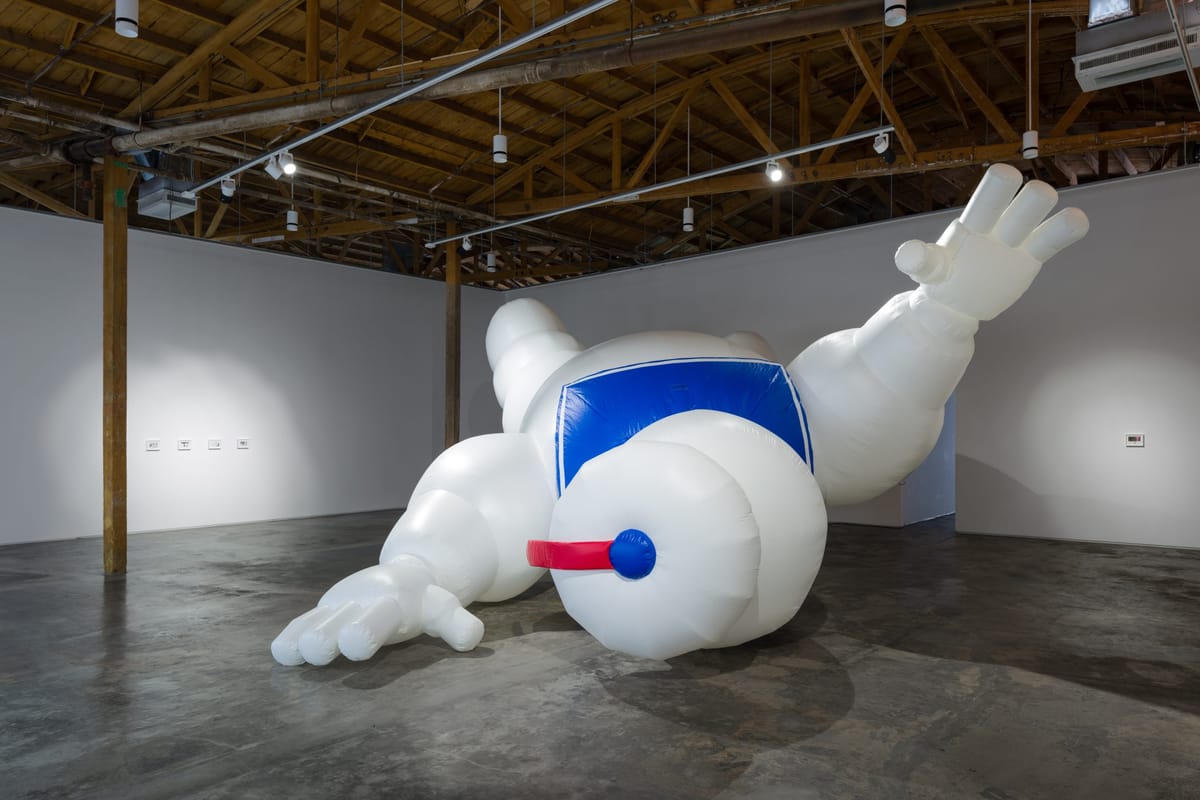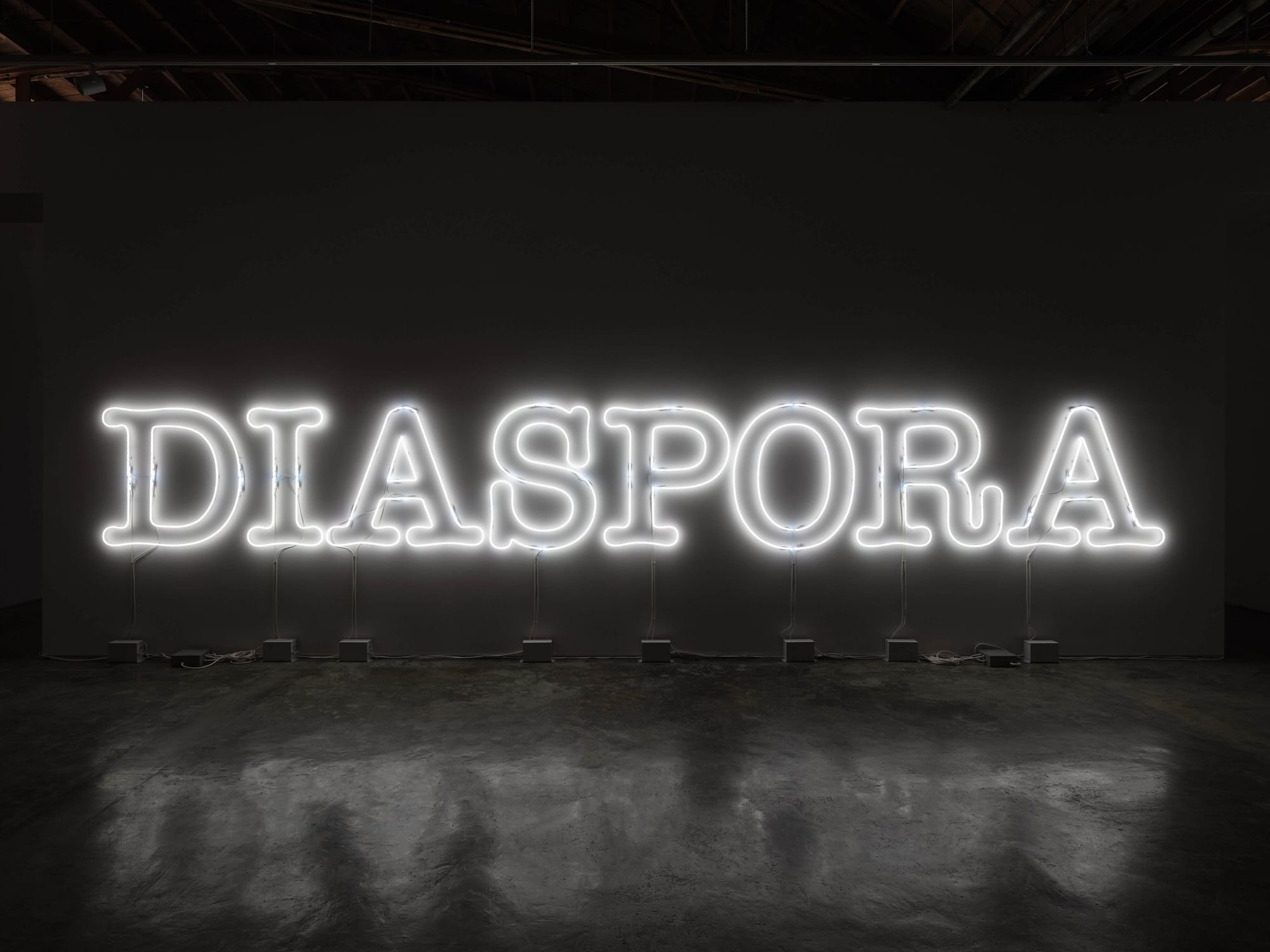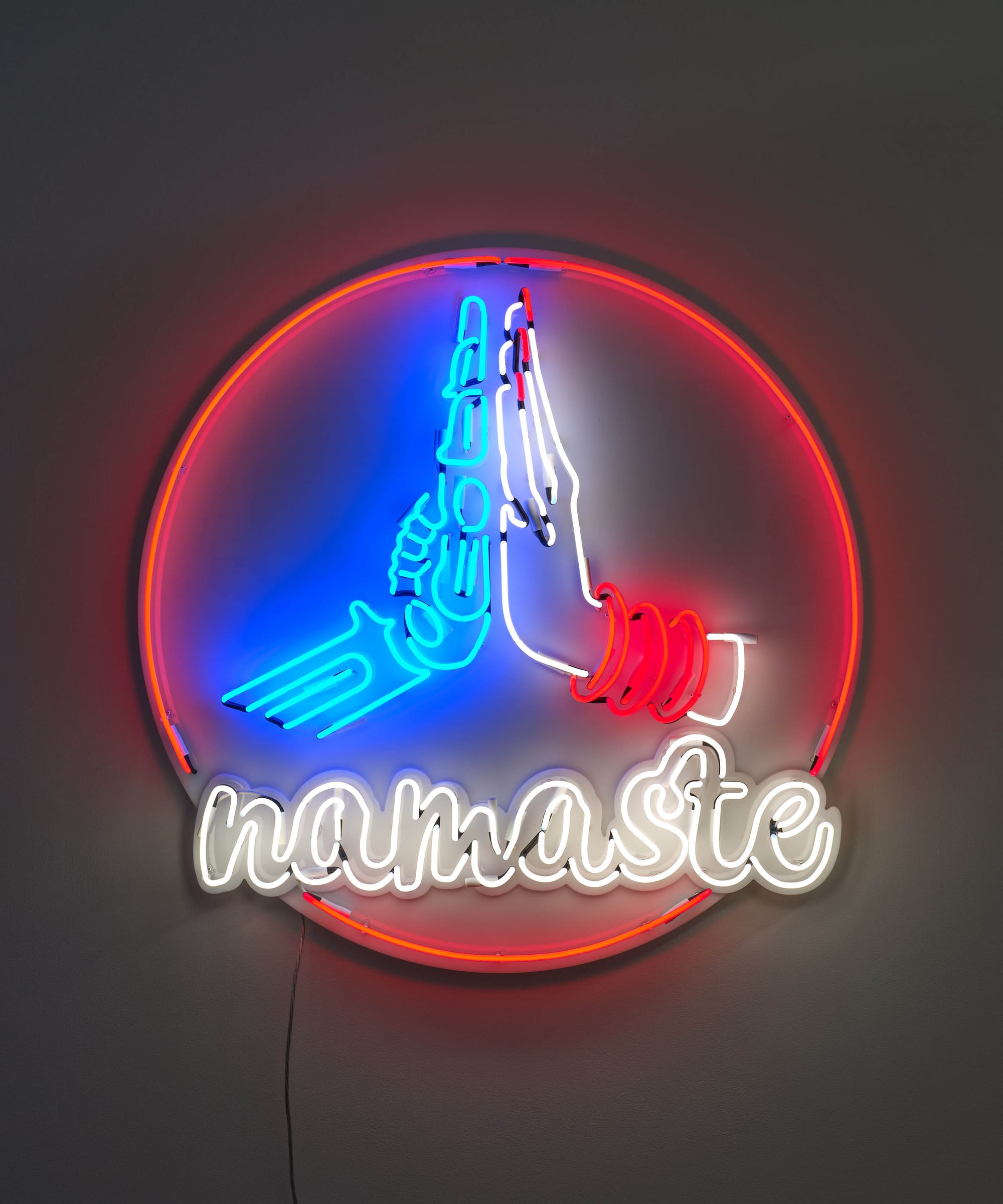Divya Mehra Makes the Machinery of History Visible
The artist’s works force theatrical encounters with metaphors for colonization or display the same violence actualized against discrete bodies.

LOS ANGELES — Who’s afraid of the Stay-Puft Marshmallow Man? In Ghostbusters (1984), the bulbous, white mascot for a fictional marshmallow brand appears as one incarnation of the villainous Gozer, a deity who taunts the Ghostbusters team with a prompt: to “choose the form of the destructor.” Artist Divya Mehra reincarnates that Stay-Puft destructor in her newest exhibition at Night Gallery, The End of You: A huge blow-up version lies, fallen, across one room beside blinking neon letters that spell out “DIASPORA,” its marshmallow-colored flesh glowing in the light. This is a “destructor” that, when summoned into view, flails humorously — even while maintaining a dominating, monstrous presence. Comically white and perpetually grinning, it forms an apt, funny metaphor for Mehra’s primary subject: the British colonizer.
Mehra, who is a Canadian of Indian descent, often utilizes rudimentary machines to examine the inhumanity of imperialism. In “You’re Doing the Work (Diamond Jubilee)” (2024), a shaky robotic arm skates along a track nailed to one wall, clutching a broom. Just below, a large red hand-knotted silk-and-wool carpet, shaped to resemble the map of India in 1947, stretches across the floor. Every so often, a ceiling-mounted pulley lifts a corner of Northern India, and the broom sweeps the exposed floor underneath. The work’s metaphorical conceit might feel heavy-handed — the colonizer, of course, sweeps its history “under the rug” — but Mehra’s bare-bones robot successfully satirizes the unfeeling gestures endemic to colonialism. The white robot’s hand taps its broom, almost impatiently, before mechanically thrusting its broom across the floor.

A white, haloed light emanates from the next room, illuminating the silhouette of the Stay-Puft Marshmallow Man — but when one enters the gallery, the light goes out. This is the magic of “Landscape Painting” (2024), a neon installation that spells out the word “DIASPORA” across one wall. As visitors enter the gallery — that is to say, move from the “homeland” outside to the “new country” within, in a miniature form of diasporic movement — they trip a motion sensor that extinguishes the word, rendering it illegible. In this way, Mehra evokes one long-term effect of colonization, wherein diasporic subjects exist within countries that often deny or diminish their presence, under leadership that forced their displacement to begin with.
Smaller works on view depict Mehra’s abstract theses on a more overt, human level. In “A little HELP?!” (2024), part of the series The End of You (2020–ongoing), a brown-skinned waiter pours wine onto a tablecloth in front of a seated, White figure — presumably a tourist, visiting a conquered state — because he is distracted by a red mushroom cloud exploding behind her. Elsewhere, “Ann Winterton 2002” (2024), a 10-inch vinyl panel, recounts a dark joke that ends with an Englishman throwing a Pakistani out of a moving train in barely visible white text. Whereas Mehra’s larger installations force theatrical encounters with metaphors for colonization, her wall-based works display the same violence actualized against discrete bodies.
In comedy, explanation is humor’s death: “Don’t kill the joke,” the popular phrase goes. Luckily, Mehra isn’t a comedian, but a conceptual artist — the occasional obviousness of her work makes palpable the typically invisible machinery of history. “Killing” is also the term for a successful show: “you killed it,” one performer might say to another. At Night Gallery, Mehra manages to do both.



Divya Mehra: The End of You, continues at Night Gallery (2050 Imperial Street, Los Angeles, California), through October 19. The exhibition was organized by the gallery.





